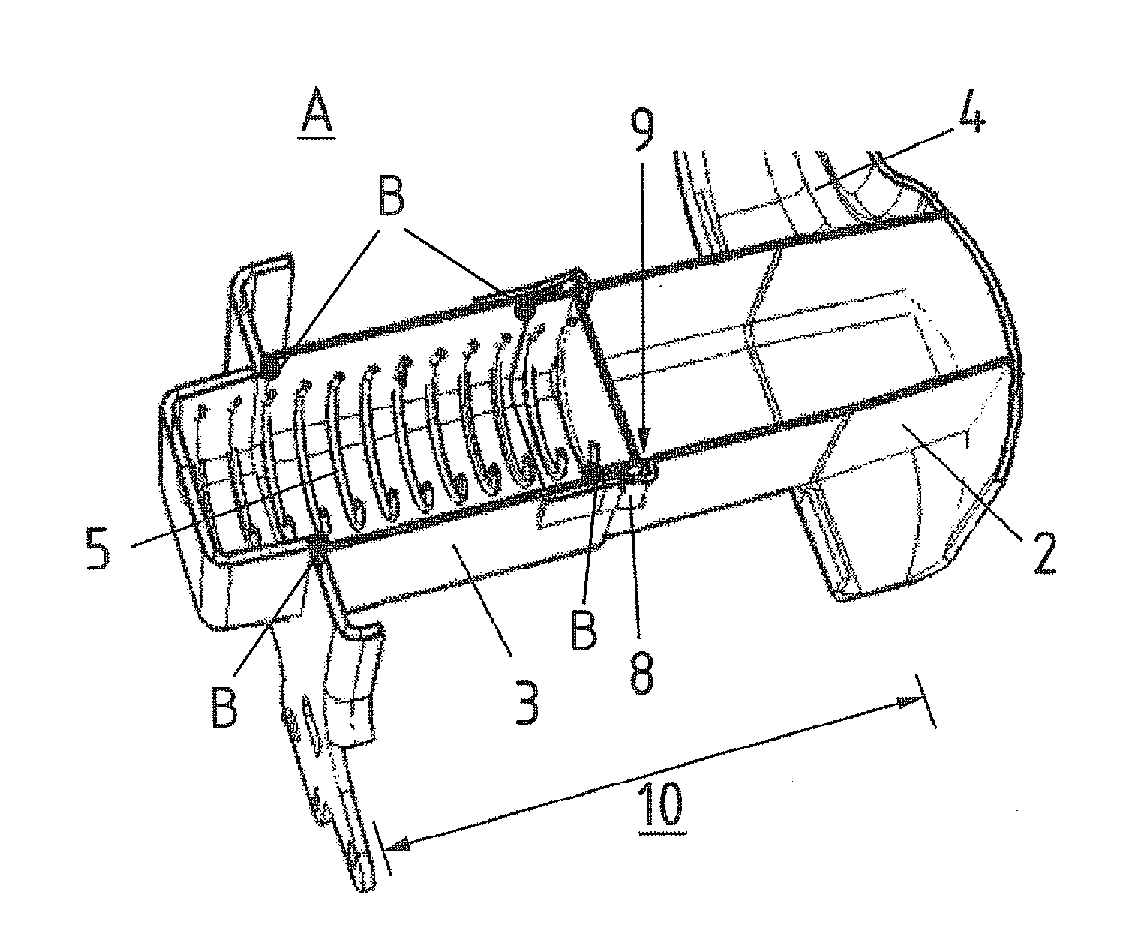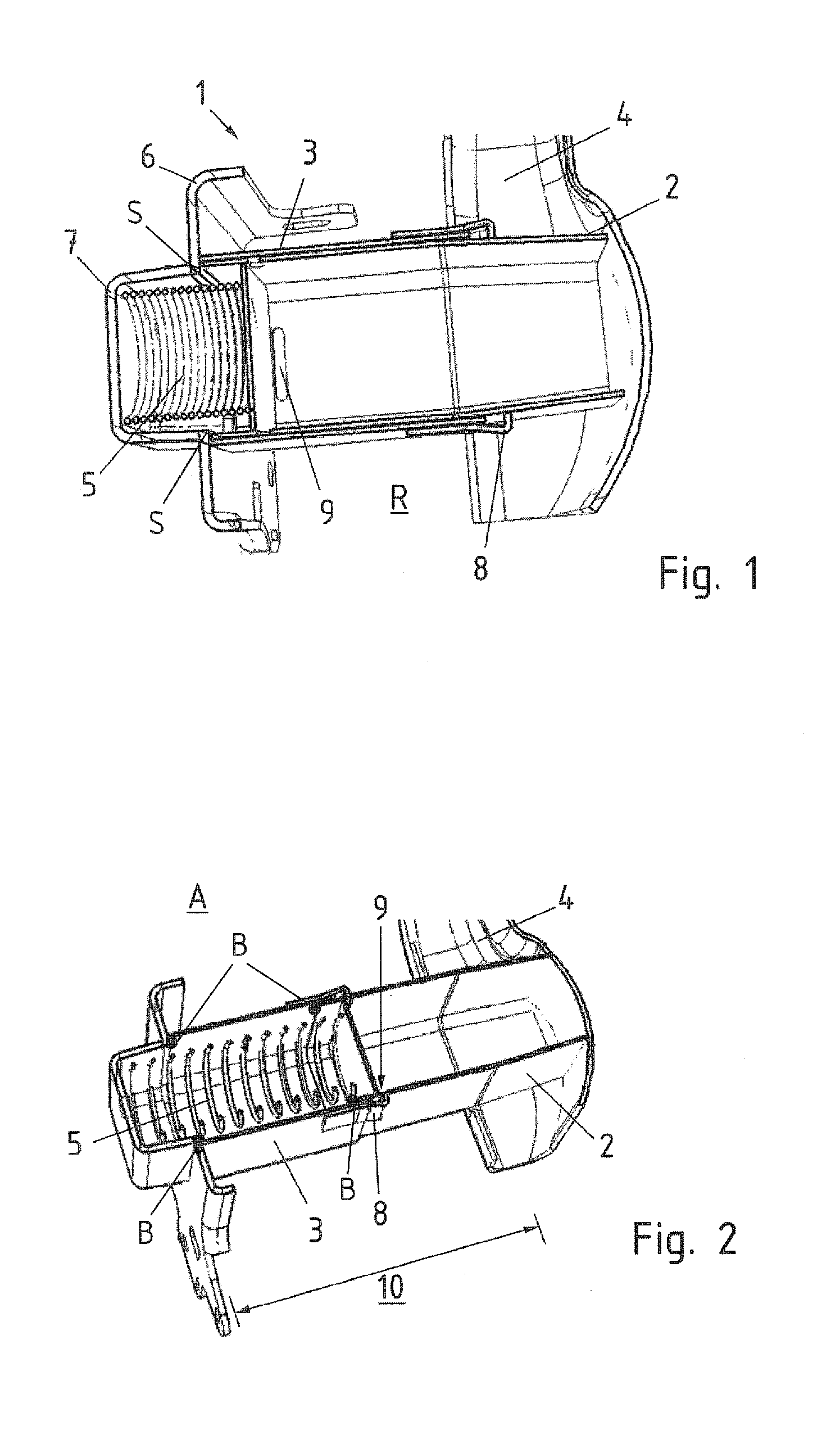[0010]A structural part according to the present invention is especially useful for manufacturing a
crash box because the safety aspect in the event of a
crash is maintained while the need for installation space is reduced as the same distance is made available in order to dissipate
impact energy into deformation energy, even though the dimensions are smaller, when the structural part assumes the idle state. As a result of the increase in dimension in the event of a crash, the crash safety is enhanced. As the structural part moves out telescopically in the activated state, the available distance for absorbing
impact energy and converting the
impact energy into deformation energy is extended.
[0011]According to another advantageous feature of the present invention, the first
locking mechanism may include a locking lug which can be welded to the inner component. In this way, there is no weakening of the inner component as would be the case when the locking lug is formed by
punching or projects outwards. The locking lug engages a yielding locking element which may be arranged on the outer component or a
flange plate provided to receive the outer component.
[0013]According to another advantageous feature of the present invention, the
actuator may be constructed as a spring. Currently preferred is the implementation as a
helical spring. The use of a spring as mechanical
actuator is beneficial because it can be installed inexpensively and reliably into the structural part for a motor vehicle. Also, a spring is less prone to malfunction and thus useful for the
longevity of the bumper
system. The bumper
system can be manufactured cost-efficiently and is highly reliable in operation. In the idle state, the spring is maintained under tension and is released when the structural part is activated so as to move the inner and outer components relative to one another and for structural part to assume the activated state. The activated state is also locked to establish the extended path for absorption of crash energy.
[0018]According to another advantageous feature of the present invention, the second locking mechanism includes a
detent nose and an
abutment associated to the
detent nose to lock the activated state. This has the
advantage that the activated state can be locked in a purely mechanical way and thus is easy and reliably to manufacture while at the same time is less prone to malfunction so that a locking of the activated state is attained reliably to meet the requirements.
[0024]According to another advantageous feature of the present invention, a guide can be arranged between the inner and outer components. Examples of a guide include rollers and / or balls which reduce friction between the inner and outer components and ensure a precise guidance of the telescoping relative movement. The guide may also be configured in the form of spacers which are provided either as external parts and / or as embossments or grooves on the inner component and / or outer component so that a flat engagement between inner and outer components is established. The guide provides tolerance compensation between inner and outer components and permits the implementation of a telescoping movement substantially in the absence of a sliding friction. This promotes the service life of a motor vehicle because it is ensured that the inner and outer components do not seize as a result of
corrosion for example, and also ensures that the telescoping relative movement is carried out flawlessly and reliably at any time.
[0025]According to another advantageous feature of the present invention, the inner component and / or the outer component may be made of
light metal or
light metal alloy. Currently preferred is aluminum
alloy. Aluminum
alloy exhibits superior crash
energy absorption capability while having little weight. A further benefit of aluminum alloy is the possibility to produce a complex
cross sectional geometry of the inner component and / or outer component in a cost-efficient manner and with
dimensional precision. Of course, it is certainly conceivable to manufacture the inner and outer components of different materials. For example, the inner component may be made of a light
metal alloy, whereas the outer component may be made of a composite or a steel material. Currently preferred is the use of aluminum alloy as material for the inner and outer components, when the structural part is used as a
crash box. The crossbeam may then be made of light
metal or steel material.
 Login to View More
Login to View More  Login to View More
Login to View More 


